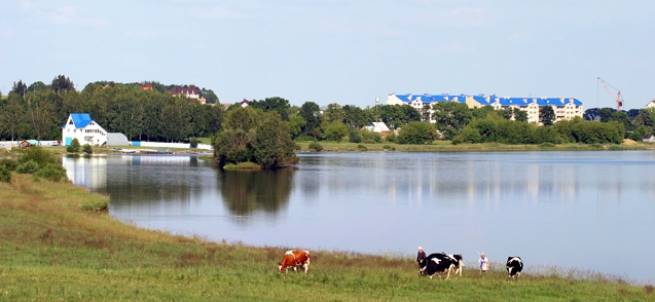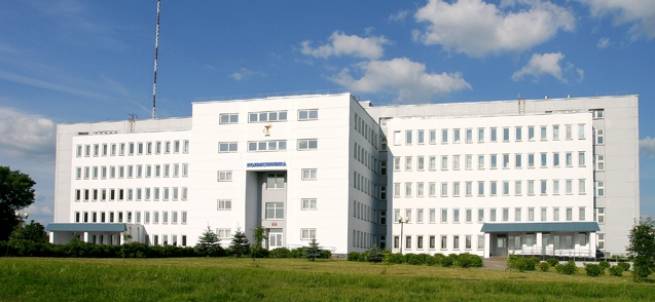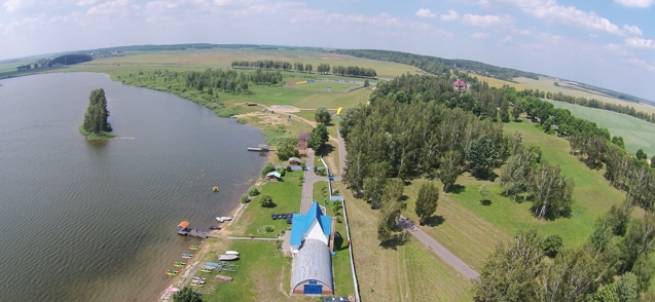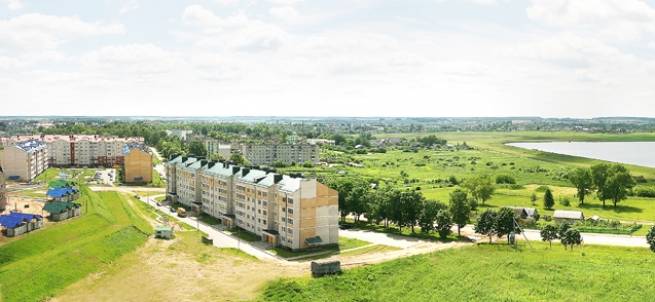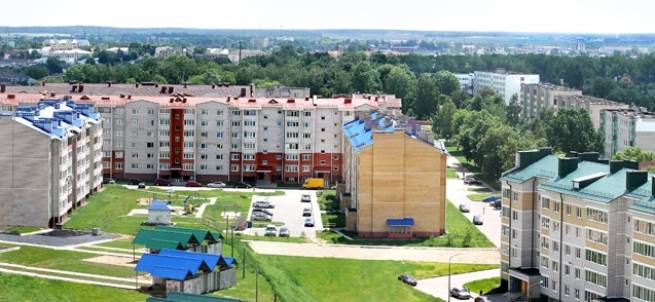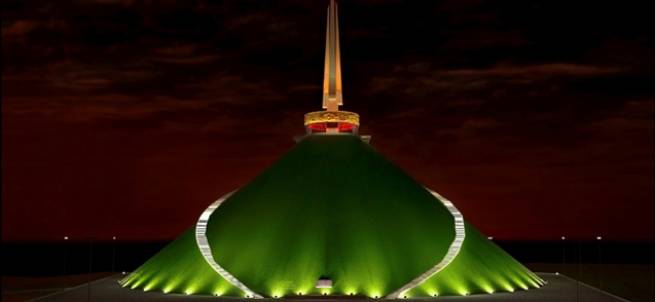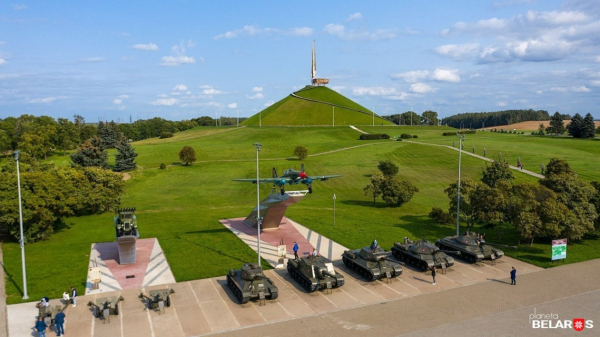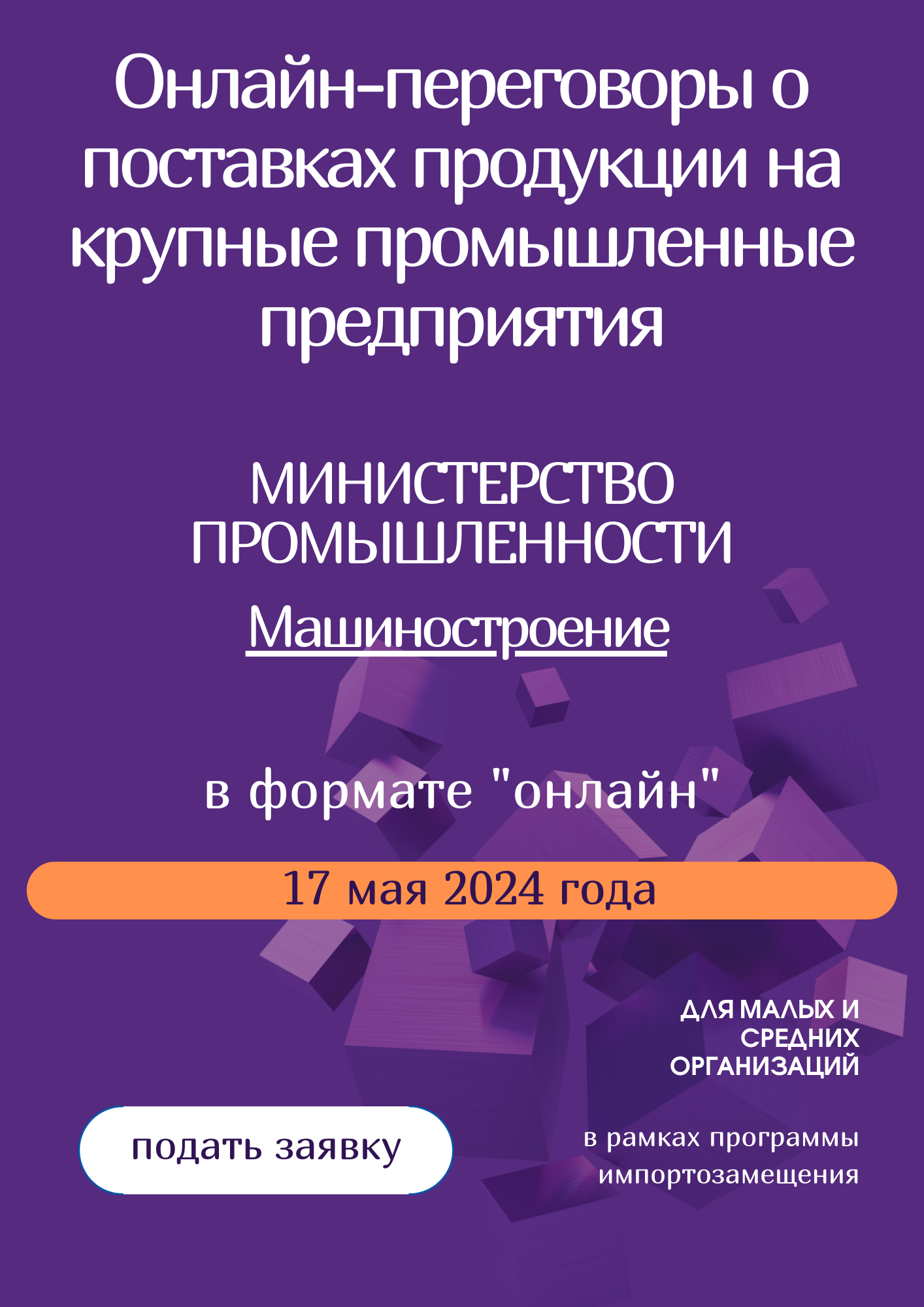ADDRESS:
222201, Minsk region,
Smolevichi, st. Sovetskaya, 125 (working hours)
Reception phone: +375 (1776) 4-42-91 "hot line"
Fax: +375 (1776) 2-76-33
Telephone "hot line" of the district executive committee: +375 (1776) 4-42-91 "hot line"
The "hot line" of the Municipal Unitary Enterprise "Smolevichskoe Housing and Public Utilities" is open from 8.00 to 13.00 and 14.00 to 17.00 Monday-Friday by phone +375 (1776) 2-73-68
Single number of reference service "one window" - 142
E-MAIL: isp@smolevichi.gov.by (for business correspondence), the section "Electronic Appeals" for appeals from citizens and legal entities.
user1
Lukashenko sends Mother's Day greetings to Belarusians

Belarusian President Aleksandr Lukashenko has wished Happy Mother's Day to Belarusian women, BelTA learned from the press service of the Belarusian leader.
“Today the most sincere words of gratitude are addressed to our dear women who fulfilled a great mission of continuing life on Earth,” the head of state noted. “Thank you for the tenderness and warmth that you give to new-born babies, for love and care for your children throughout your entire life, for wisdom and devotion helping them in the future to achieve high and noble goals,” the president added.
“We greatly appreciate the hard work of mothers raising many children, as they are building the future of the nation. We are proud of Belarusian women who, setting an example of conscious and responsible motherhood, successfully fulfill themselves in their profession and public initiatives. We admire mothers who raised true patriots. All of you are the pillar of our state and you will always be under its protection,” Aleksandr Lukashenko stressed.
The president continued: “On this day, I wish you, dear mothers, your families and friends, good health and wellbeing and endless happiness. May radiant smiles of your children make the world a more beautiful place and inspire us to new achievements for the benefit of our dear Belarus.”
Source: БелТА

Belarus is set to launch full-cycle production of Russia's Sputnik V vaccine by the end of the year, Healthcare Minister Dmitry Pinevich told reporters on the sidelines of the 34th session of the CIS Healthcare Cooperation Council that is underway in Minsk on 13-14 October, BelTA has learned.
“The full-cycle production of Russia's Sputnik V vaccine will begin on the premises of the Belmedpreparaty pharmaceutical company on Aranskaya Street by the end of this year,” Dmitry Pinevich informed.
The minister did not specify the projected output of this vaccine. “Our number one task now is to make sure it will be a high-quality vaccine. It must fully replicate the existing vaccine,” he said.
Dmitry Pinevich emphasized that the production facility that will make Sputnik V can be easily localized to produce the Sputnik Light vaccine.
“We purchased the Sputnik Light vaccine. Now we are using it quite actively. Its localization will be needed only when it becomes clear that Sputnik Light is widely used and that localization makes economic sense. In addition to Sputnik Light, our counterparts, strategic partners from the Russian Federation are also developing children's vaccines based on Sputnik V.
The 34th session of the CIS Healthcare Cooperation Council is taking place in Minsk on 13-14 October.
Members of the council are healthcare ministers and chief state sanitary inspectors. Attending the session are also WHO Regional Director for Europe Hans Kluge, and UNAIDS Regional Director for Eastern Europe and Central Asia Alexander Goliusov. Hans Kluge is expected to share his views on the lessons learned from the COVID-19 pandemic in the context of emergency preparedness and response.
Source: БелТА
How did the harvesting campaign develop in Minsk region and will there be enough grain for livestock enterprises?
How did the current harvest campaign develop? What crops are most profitable? Will livestock enterprises be provided with grain? Mlyn.BY spoke about this and many other things by the first deputy chairman of Minsk Region Executive Committee Sergei Levkovich.
- On September 25, the agrarians of Minsk region will celebrate the regional "Dazhynki". With what results did the region come to the holiday?
- This year there has been a tendency towards a decrease in the volume of the harvest relative to the level of the last year. In the spring, due to frosts, 31 thousand hectares of winter crops died, and this is almost 10 percent of the total area under crops. Also, the cold spring did not contribute to the intensive development of grain crops and did not allow sowing spring crops according to all the requirements of the technology. The soil was cold and the seedlings were late. The abnormally hot summer also had a negative impact.
In turn, workers in the agricultural sector carried out a lot of work to form the harvest of the current year: this is the accumulation of mineral fertilizers, and the timely care of crops. But, unfortunately, the grain shortfall in the region amounted to more than 300 thousand tons, or about 17%.
There is no disaster in this. Over 1 million 630 thousand tons of grain have already been harvested. In addition, 250 thousand tons of rapeseed were harvested. The harvesting of legumes and buckwheat continues. Ahead of us is the harvesting of corn for grain. We plan to collect about 400 thousand tons. The state order for grain in the region has been fulfilled by 100 percent. This suggests that there will be bread in the country. And it will be at an affordable price.
- What tasks does the agro-industrial complex of the region set for itself?
- The main task is to increase the economic efficiency of agricultural production through the formation of fair prices for it, as well as to reduce the cost of production of crop and livestock products.
Today, work is underway to provide the main enterprises - producers of poultry meat, eggs and pork with the required volume of concentrated feed.
I think that this year we will get a good harvest of corn for grain. And taking into account the availability of grain in the agricultural organizations of the region, as well as the created reserves, the production of livestock products will be provided in the volumes planned by the enterprises.
- What work has been done to prepare for the harvest?
- Every year, purposeful work is carried out in the region to purchase agricultural equipment. This year, the organizations of Minsk region received more than 200 units of various agricultural machinery. 51 of them are grain harvesters.
Also this year, construction of 28 new grain drying complexes is underway. For the harvesting of corn, the bulk of them will be put into operation. And this is a very serious help in growing corn for grain. We see a certain benefit in this culture. Corn is a valuable feed that is used in almost all types of livestock production. It is also corn silage, without which it is difficult to imagine dairy farming today.
- What agricultural crops can be called promising today?
- Over the past four years, we have been increasing the sowing of corn. This year we expect to harvest at least 60 thousand hectares of this crop. Today, 253 thousand hectares have been allocated for corn. In the future, we plan to increase this area to 300 thousand hectares and to improve the cultivation technology as much as possible.
Rapeseed shows high growth rates of economic efficiency. For a number of agricultural organizations, the profitability of growing this crop reaches 40 percent or more. For the second year in a row, we are expanding the area for rapeseed.
We are also expanding the crops of winter barley. The culture is widely in demand in animal husbandry for all groups of livestock and poultry. This year we plan to sow more than 20 thousand hectares of winter barley. In the hands of professionals, it gives a good yield - 60 centners per hectare and more.
Despite not entirely favorable external factors, we pay close attention to the sale of the harvest. This year, we tried to withstand the seasonal drop in prices for feed and food grains, both in neighboring countries and in the domestic market. The task is to sell the harvested crop at the most favorable prices for agricultural producers.
This year in Minsk region, there are 627 crews of thousands of people, 95 crews have threshed more than two thousand tons of grain, 12 crews have threshed more than three thousand tons.
- What about grain prices?
- Already today the price of grain shows a constant growth both on the external and internal markets. In this regard, we need to minimize sales during the harvesting period (when the price of grain, as a rule, is minimal), and maximally preserve the harvest in order to sell it throughout the year. There are plans to build new grain storage facilities in the area.
- In Minsk region, the number of thousand-strong crews is growing, as well as farms that have overcome the high yield per hectare. Who has shown good results in the grain field this year?
- Agrarians of the region work with dignity. This year, as in previous years, we have a large number of leading workers: 627 crews of thousands of people, 95 crews threshed more than two thousand tons of grain, 12 crews threshed more than three thousand tons.
Nesvizh, Minsk, Dzerzhinsk districts have traditionally high results. There is a high culture of agriculture, good human resources and competence in the production of agricultural products. Gastellovskoe OJSC (Minsk District), Agrokombinat Dzerzhinsky OJSC, Gorodilovo OJSC (Molodechno district) - these enterprises traditionally operate at a high level.
In recent years, the Kopyl district has been demonstrating good rates and dynamics of development. Slutsk region shows good results. Among the best are OJSC Vitko-Agro, state farm Rachkovichi, OJSC Kozlovichi-Agro. OJSC "Kukhchitsy" of Kletsk district has a decent result, both in the production of crop and livestock products.
SEC Agrokombinat Snov and OJSC Novaya Zhizn in Nesvizh district, Kletsk branch of the Slutsk cheese-making plant, the agricultural enterprise Voskhod in Minsk region, the Pravda-Agro branch of OJSC Agrokombinat Dzerzhinsky and many others distinguished themselves with high grain yield.
More than 54 thousand people work in the agriculture of the Minsk region. A quarter of the country's agricultural products are formed by these people. And it's important to maintain their well-being. This year, we have taken a good pace in terms of wage growth, and in terms of growth in the revenue of agricultural organizations. For seven months, revenue grew by almost 18 percent, while the volume of gross output grew by 102.3 percent. Profit increased by 57 million rubles. The level of wages is growing almost proportionally.
I congratulate everyone on the harvest holiday "Dazhynki". I wish all workers in the agricultural sector good health, success, prosperity, so that peace and tranquility reign in every family that works in the countryside.
Source: Minsk-region.gov.by
Lukashenko wants winter crops sown within one week

Belarus President Aleksandr Lukashenko received a detailed report from Agriculture and Food Minister Ivan Krupko in the morning on 24 September. The report described the situation in agriculture caused by unfavorable weather, the press service of the Belarusian leader told BelTA.
The prolonged sowing of winter crops and the slow harvesting of potatoes were the main problems on the agenda. Slowdowns in sugar beet harvesting and the harvesting of maize for silage in some areas were also mentioned.
After hearing out the report Aleksandr Lukashenko gave a number of instructions. In particular, the government, the agriculture and food minister, and the oblast governors will have to work together to expedite the pace of agricultural work. The sowing of winter crops has to go on till late in the evening and into the night where it is possible. To finish the sowing of winter crops within one week is the number one priority.
The agriculture and food minister and the government were also instructed to organize a conference in one week in order to report results of the work to the head of state.
Source: БелТА

In 2021-2025 the Belarusian peat industry is set to extract about 11 million tonnes of peat and to produce 6.5 million tonnes of products, Director General of the state enterprise Beltopgaz, member of the Council of the Republic of the National Assembly of Belarus Aleksei Kushnarenko told the media, BelTA learned the press service of the Energy Ministry.
The industry-wide program for the comprehensive modernization of the peat industry for 2021-2025 is now in progress. Promising areas of peat use are boiler houses of the housing and utilities services sector and the cement industry. The cement industry consumes 43% of the total production of peat briquettes and artificially dried milled peat. Annually, about 300,000 tonnes of fuel briquettes are supplied to cement plants, which enables them to replace natural gas and coal. In the future, this volume will be increased, including thanks to a project to be implemented at Krasnoselskstroymaterialy to use dried peat in the heat generator.
This year the peat producing season has already ended. As of 1 September, 1.5 million tonnes of peat was produced, including 1.3 million tonnes (89.2%) of milled peat (for the production of peat fuel) and 163,600 tonnes (10.8%) of non-fuel peat. The peat reserves in the country are enough to last for the next 100 years. Their total volume is estimated at 2.4 billion tonnes, of which 302 million tonnes are suitable for industrial development.
“We supply products to 25 countries of the world,” Aleksei Kushnarenko added. “This year, we made trial shipments to Colombia. All in all, the export of goods and services amounted to $25 million in H1 2021, up by 22% year-on-year.”
Source: БелТА
SITE DEVELOPMENT - UE «MINSKAYA VOLNA» | INFORMATION SUPPORT UE Information agency «MINSKAYA PRAVDA»








